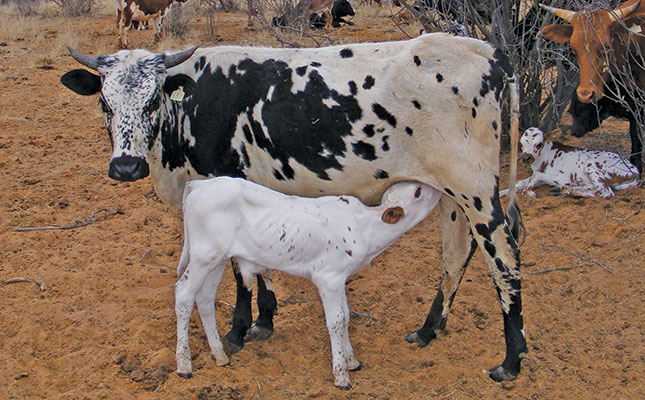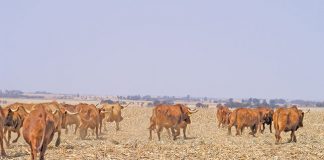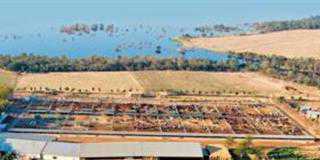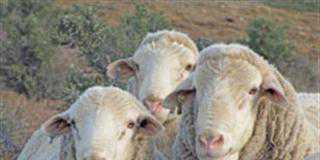
Photo: Supplied
The longevity of a cow is determined by the terminal age at which she can no longer contribute meaningfully to a breeding herd.
In the past, farmers took only the age of the animal into account when deciding whether or not to cull her from a breeding herd.
“If a cow reached an advanced age, she was simply removed from the herd. Fortunately,
this is no longer the case,” says Anette Theunissen, a senior researcher in animal science at the Vaalharts Research Station in Jan Kempdorp, Northern Cape.
Today, a cow’s age is of less importance. Fertility, and value to the herd, are judged on the animal’s ability to successfully deliver and raise a calf annually regardless of her age.
According to Theunissen, common sense dictates that a productive cow that stays in the herd for longer adds far more value to the sustainability of the herd than one that must be removed and replaced at a younger age.
The more productive cow decreases the need for replacement heifers, as the farmer will have to replace a smaller percentage of cows every year to maintain the herd size.
Fertility and climate change
A number of factors have an effect on longevity. Over and above fertility, the impact of climate change on beef cattle cows is becoming an increasingly important selection criterion.
To sustain a productive cow herd, all traits that add to or subtract from an animal’s lifespan should be managed holistically, says Theunissen.
For this reason, it is necessary for environmental changes caused by climate change to be added to the equation. Selection criteria are interconnected, and regardless of which cow selection programme is followed, it should always be geared towards long-term sustainability and economic viability.
“In South Africa, temperatures are likely to increase as a result of climate change. Farmers should therefore take heed of the impact of the effects of environmental changes on their production systems. It makes economic sense to ascertain animals’ tolerance or vulnerability to these changes and how it could affect productivity,” she says.
This calls for a thorough analysis of a beef cattle enterprise’s strengths and weaknesses, and the selection adaptations and adjustments needed to mitigate the effect of climate change in the long run. Animals adapted to climate change are usually relatively long-lived and remain fertile for a considerable number of years, even up to the age of 20.
According to Theunissen, fertility traits coupled with longevity form the foundation of a successful breeding programme. This is why selection for days to calving, calving intervals and calving tempo is so important.
Ectoparasites and eye disorders
“It’s widely accepted that above-normal maximum temperatures caused by climate change bring about lower reproduction and growth rates in cattle, resulting in a relatively short lifetime,” she says.
A host of other factors connected to climate change also affect longevity. These include calving difficulty, ectoparasites (ticks and mosquitoes), endoparasites (gastrointestinal parasites such as liver fluke) and eye disorders.
Eye problems include inflammation of the conjunctiva and ocular squamous cell carcinoma.
Changes in the quality and composition of grazing may also cause rapid teeth deterioration.
Other abnormalities such as ‘bottle’ teats, pendulous udders, and vaginal and uterine prolapse can also reduce the lifespan of a cow. However, all these traits have low heritability, and hence take time to be eradicated solely through selection.
“We know that hybrid vigour (heterosis) and complementarity can attain fast progress in a crossbred beef cattle herd,” explains Theunissen.
“Thus, one avenue that can be pursued to mitigate the consequences of climate change is the introduction of hardier, indigenous breeds to the genetic make-up of a herd. Farmers need to do careful planning before embarking on this journey, however.”
Positive crossbreeding
According to Theunissen, research data shows that cow longevity can be increased by crossbreeding Bos indicus or Sanga breeds with B. taurus cows. Sanga is the collective name for indigenous cattle of sub-Saharan Africa, while B. indicus was developed from lines of the Indian Zebu. B. taurus breeds are derived from British and European stock.
Zebu or Sanga cows are known for their exceptional ability to adapt to hot, humid conditions.
This is enhanced by a smooth coat and well-developed sweat and sebaceous glands. These breeds are also more effective than B. taurus breeds in utilising low-quality grazing.
A Sanga breed, such as the Nguni, maintains body weight during winter considerably better than exotic breeds because of increased blood urea and ruminal ammonia levels.
Zebu and Sanga cattle breeds’ resistance to high temperatures, ticks and flies, and their ability to maintain reproductive efficiency in the semi-arid African climate, have been developed over thousands of years.
These breeds are known for calving ease, partly attributed to a large pelvic height to width ratio, and the ability to suppress foetal growth by retaining comparatively larger blood volumes in their skin, away from the developing foetus.
Because of the breeds’ strong hybrid vigour, the calving ease trait also occurs in Zebu, Sanga and B. taurus crossbred cows.
Tick resistance
According to Theunissen, ectoparasite resistance has become an important beef cattle selection tool because of the increased occurrence of ticks and expansion of tick-borne diseases attributed to global warming.
The Zebu and Sanga genetic types’ hardiness, fertility and a high degree of disease resistance as a result of natural selection over millennia has resulted in animals that are highly tick- and mosquito-resistant. B. taurus, Zebu and Sanga crosses present a measure of tolerance to these pests.
Ectoparasites and associated diseases could have a severe impact on optimal beef production and, obviously, profitability. These diseases include heartwater, gallsickness and redwater.
Mature cows usually have a measure of immunity against gastrointestinal helminths
such as brown stomach worm, which in heavily infested animals could result in death. Symptoms of infestation include lethargy and collapse, weight loss, damage to and inflammation of the gut, and lesions on the stomach wall.
“Zebu and Zebu crossbreeds are far less prone to gastrointestinal helminths than B. taurus and their crossbreeds,” says Theunissen.
Eye disorders such as infectious bovine karatoconjuntivitis and eye cancer incidences impair weight gain and add significantly to the input costs associated with a beef cattle herd. These disorders could cause temporary or permanent blindness. Research has shown that B. indicus and Sanga genetic types are more resistant to eye disorders than B. taurus genetic types.
Worn teeth and poor body condition
Another important factor is the condition of an animal’s teeth, according to Theunissen. As cows age, their teeth deteriorate, affecting their ability to graze. As a result, body condition deteriorates and the animals cannot keep up an optimal level of production.
Pasture evolution as a result of climate change will increasingly add to the lignification of grasses. In this process, grass species become more woody through the formation and deposit of lignin in cell walls.
“It’s therefore of utmost importance that beef cattle producers constantly evaluate and record teeth condition and the age at which cows’ teeth get so worn that they find it difficult to graze.
“Crossbreeding could be the answer to rapid teeth deterioration. B. taurus cows crossbred with B. indicus and Sanga types, for example, maintain their incisor teeth longer than purebred B. taurus cows,” says Theunissen.
Udders
High, wide and firmly attached udders with appropriate teat size and placement are also associated with cow longevity. Udder and teat problems are relatively unknown in Sanga types.
Mastitis also appears more often in purebred first-calf heifers than in crossbred heifers.
A wide genetic selection to suit every farmer
Beef producers need to determine which genetic type will optimise pre-weaning productivity and longevity in a cow herd.
“Maternal breed composition does not necessarily have to be a 50:50 ratio between B. indicus or Sanga and B. taurus breeds,” says Theunissen.
The breeding of an optimal genetic type to meet an individual producer’s need within a specific farming environment can be quite challenging, she adds, but the diversity of genetic resources available in South Africa affords breeders a wide selection of options and opportunities.
Email Anette Theunissen at [email protected], or phone her on 087 630 0300.













